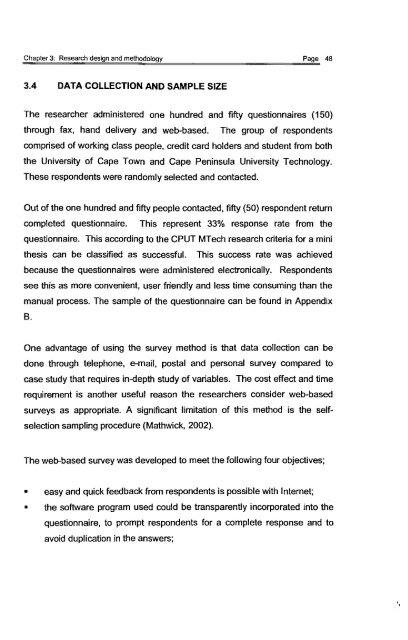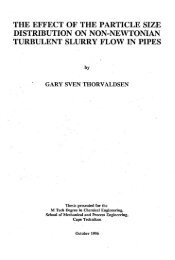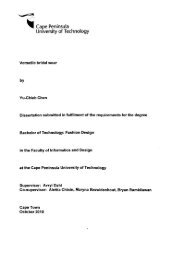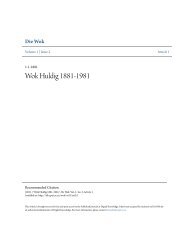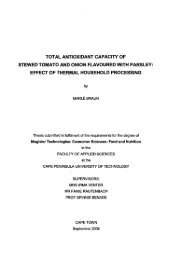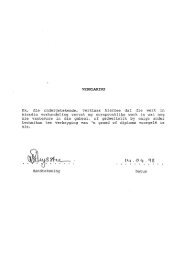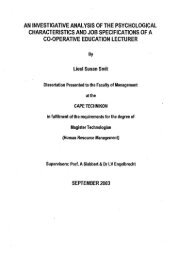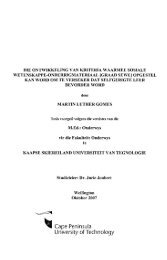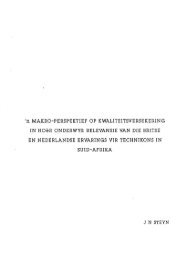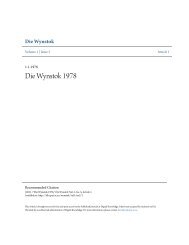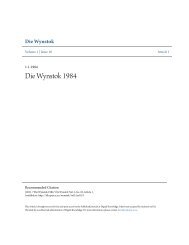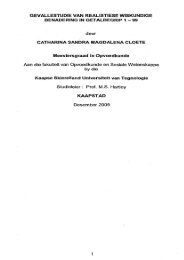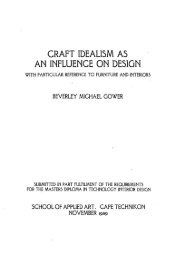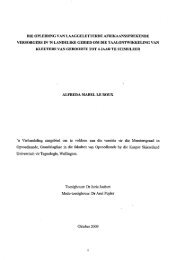E-commerce - Cape Peninsula University of Technology
E-commerce - Cape Peninsula University of Technology
E-commerce - Cape Peninsula University of Technology
Create successful ePaper yourself
Turn your PDF publications into a flip-book with our unique Google optimized e-Paper software.
Chapter 3: Research design and methodology<br />
3.4 DATA COLLECTION AND SAMPLE SIZE<br />
Page 48<br />
The researcher administered one hundred and fifty questionnaires (150)<br />
through fax, hand delivery and web-based. The group <strong>of</strong> respondents<br />
comprised <strong>of</strong> working class people, credit card holders and student from both<br />
the <strong>University</strong> <strong>of</strong> <strong>Cape</strong> Town and <strong>Cape</strong> <strong>Peninsula</strong> <strong>University</strong> <strong>Technology</strong>.<br />
These respondents were randomly selected and contacted.<br />
Out <strong>of</strong> the one hundred and fifty people contacted, fifty (50) respondent return<br />
completed questionnaire. This represent 33% response rate from the<br />
questionnaire. This according to the CPUT MTech research criteria for a mini<br />
thesis can be classified as successful. This success rate was achieved<br />
because the questionnaires were administered electronically. Respondents<br />
see this as more convenient, user friendly and less time consuming than the<br />
manual process. The sample <strong>of</strong> the questionnaire can be found in Appendix<br />
B.<br />
One advantage <strong>of</strong> using the survey method is that data collection can be<br />
done through telephone, e-mail, postal and personal survey compared to<br />
case study that requires in-depth study <strong>of</strong> variables. The cost effect and time<br />
requirement is another useful reason the researchers consider web-based<br />
surveys as appropriate. A significant limitation <strong>of</strong> this method is the self<br />
selection sampling procedure (Mathwick, 2002).<br />
The web-based survey was developed to meet the following four objectives;<br />
• easy and quick feedback from respondents is possible with Internet;<br />
• the s<strong>of</strong>tware program used could be transparently incorporated into the<br />
questionnaire, to prompt respondents for a complete response and to<br />
avoid duplication in the answers;<br />
"


